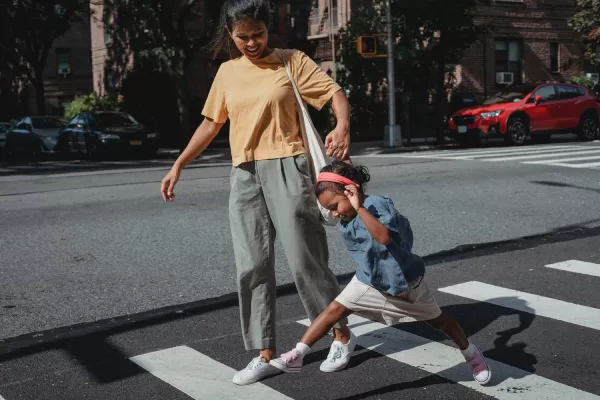
Make Roads Safer for Children
August 31, 2023 by
jngijamaica
As the new school year approaches, Lynford Reece, Senior Manager, Distribution and Marketing, JN General Insurance, is appealing to motorists to exercise greater care on the road to ensure the safety of children.
His appeal is promoted by statistics provided by the Road Safety Unit, which show that some 135 children have perished on the road between 2017 and 2022.
“Children are vulnerable road users because they are easily distracted and they have limited cognitive skills,” Mr Reece explained. This can result in them struggling to make wise decisions on using the road safely. They often have difficulty making good judgment about distance of vehicles approaching them when they are crossing the road. Children by nature love to play and may run into the path of a vehicle.”
“On the other hand, motorists driving large vehicles, such as buses and trucks, may not notice a small child crossing. This issue is further compounded if drivers are distracted while driving,” he added.
Mr Reece pointed out that even in minor crashes, children can sustain life threatening injuries.
“Their small, delicate bodies cannot withstand the impact of a fast-moving vehicle, which can easily hoist them, creating further injuries. Besides, the psychological trauma of being in a road crash can last for years.”
Sharon Bell, Assistant Manager, e-Banking, JN Bank, related that eight years ago her daughter, then 16 years old, met in a serious motor vehicle crash which left her with lifelong injuries and psychological issues.
The crash occurred after a car overtook another which had stopped to allow her daughter to cross the road. She was on her way to school for extra classes one Saturday when it occurred. She sustained a broken arm and ankle and other injuries that resulted in her being hospitalised for six months and wheelchair-bound for more than seven months. Additionally, she had to miss her Caribbean Secondary Examination Certificate (CSEC) exams, resulting in her spending an extra year in high school.
“She now has a fear of crossing the road,” Mrs Bell disclosed, adding that her daughter is always intentional about using a pedestrian crossing where one exists.
The crash left a huge noticeable scar on her left arm, which often draws attention, causing her daughter much distress. Mrs Bell had to change her daughter’s wardrobe to include long-sleeved clothing.
“People keep asking, ‘What happened to you?’ So she is reliving it over and over because the scar is there as a reminder.”
Beyond the psychological effect, her daughter still experiences physical discomfort in her arm and ankle.
“The hand is not 100 per cent. She experiences tingling. The ankle still bothers her. When she goes on the road and comes back, it is swollen and when she wakes in the mornings, it is very stiff,” she said.
Mr Reece implores motorists to use the road responsibly and encourages parents to discuss road safety with their children.
“If children are going to school for the first time or to a new school, accompany them so they are familiar with the route. Continue to walk with them until you are satisfied they can manage. Teach them to walk in single file and to use the pedestrian crossing where there is one. If there is no pedestrian crossing, tell them to look up, down and up again before crossing.”
He provides the following tips to motorists to help protect children when on the roads:
- Slow down when approaching a school or pedestrian crossing, especially during school hours. Be patient and allow children to completely cross before moving off.
- Always heed the instruction of school wardens. They play a critical role in helping to make the road safe for our children.
- When entering a school yard, look, look and look again before backing up.
- Obey the school’s rules about drop-off and pick-up to ensure children’s safety and to avoid unnecessary congestion which can lead to aggressive driving in the school yard.
- Ensure that young children are placed in age-appropriate child seats and that older ones are restrained with a seat belt.
- It is recommended that children under 13 ride on the back seat. It is much safer for them in the event of a crash.
“Crashes are preventable. By exercising a little extra attention and care, our children and motorists can be kept safe on the road,” said Mr Reece.
JNGI has been a staunch road safety advocate over the years. The company hosted a road safety webinar last year, erected warning signs at crash hotspots across the country indicating where motorists are most at risk and initiated a “Just Slow Down” campaign aimed at sensitising motorists and motorcyclists about the implications of speeding.

